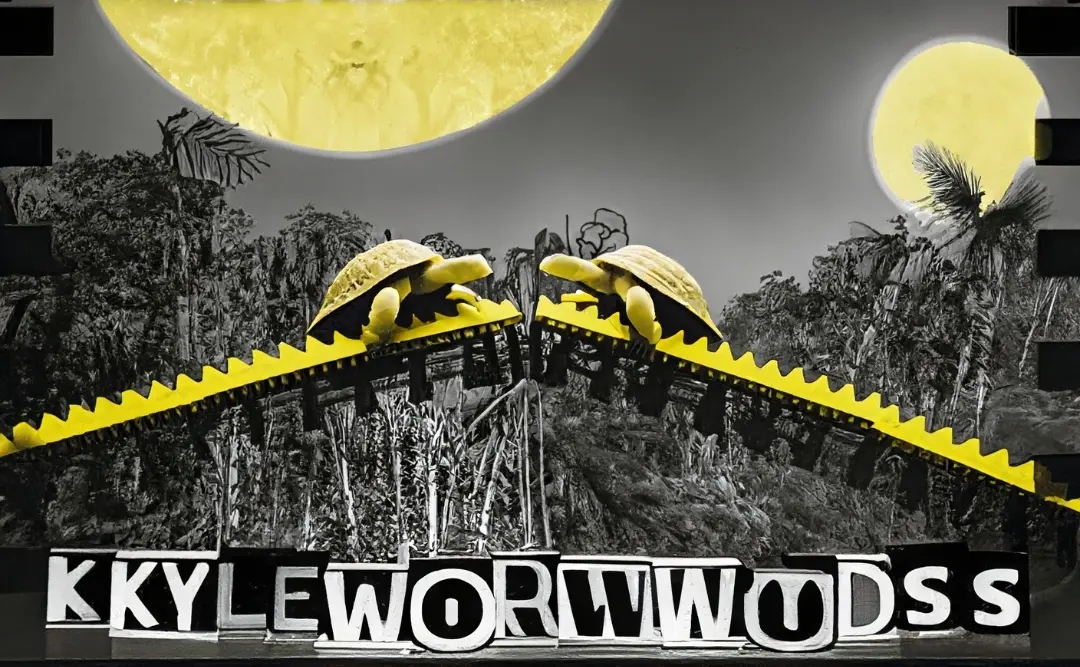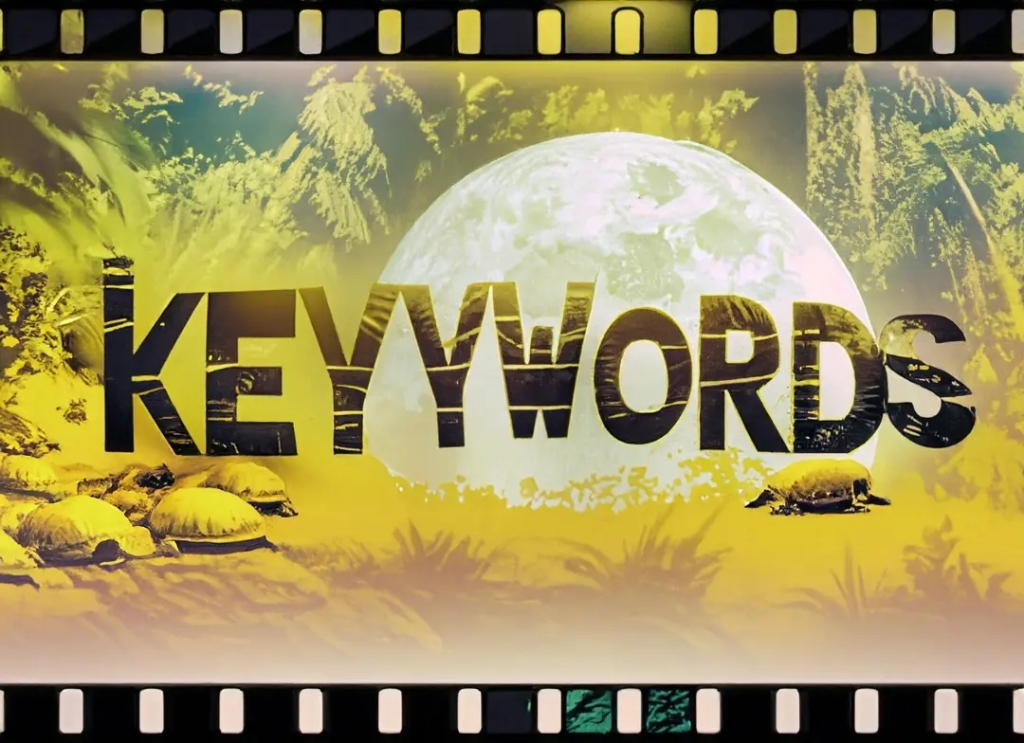How to apply the art of SEO keywords to the art of cinema and why should we care?
SEO keywords connect the multimedia content we publish online with its target online audiences. Their applications in the art of cinema should theoretically mean writing and producing films for people who search them. Therefore, the SEO keywords we use in cinema to craft movies should operate as direct links to target markets.
Video content is the number one source of information for 66% of people and the most powerful component of an online content marketing strategy. People watch an average of 19 hours of online video per week. For the Web’s algorithms cinema is video.
My Ph.D. cross-disciplinary research project focuses on creating flexible distribution-ready, SEO-friendly cinema. It explores and tests the ways we can optimize film production to equip movies and videos with an intrinsic online distribution capacity. Its core purpose is to help film and filmmakers become more independent.
A theme in my research is the use of keywords, and more specifically the application of SEO keywords in film development and production phases. This article comes in this context. Your contribution will be highly appreciated and included in the final thesis if relevant.

The old distribution problem of independent filmmakers became also my problem, but only the world changed.
SEO is the art that convinces algorithms to prioritize the content we publish and to take it organically to its human public. The art of cinema needs no explanations for filmmakers. In general, film industry employs SEO and other marketing strategies after a film in made, in the distribution phase.
However, the strategies employed in the product creation and storytelling formulas are the same since the beginnings of the film industry. Top universities such us Columbia, University of Southern California, American Film Institute Conservatory and others across the globe place a high emphasis on researching the art of digital storytelling to deliver new formulas in the market. Nevertheless, at the level of grassroots reality there is not much applicable knowledge for me as an independent.
As an independent filmmaker in the digital age populated with online realms ruled by growing algorithms and online marketing sub-domains, my concern is to develop a sustainable career in an industry where the odds were always against.
Here, I am Tortuga, a creature that moves slow and seems to stagnate on lands, but who flies in waters, nevertheless a survivor in both worlds. Naturally, the currents push me towards the unknown of virtual worlds which are governed by algorithms, a model that lacks transparency and that I hardly understand. The game is totally different.
In my reality, once the film is done, I and the entire crew and cast are done. Happy we climbed a mountain and terrified by letting our piece of cinema be or die at the mercy of random and subjective factors. And that is something that bothers me as it blocks my view upon clear horizons.
This is the reason I slowed down my life in the field in exchange for an academic ride to understand how to align a movie strategy with the online ecosystem. Something I never thought I will ever do, if my need of expression through filmmaking wouldn’t have been so loud.
As any research journey, I live mostly in the woods and I have more questions than answers. I can only hope that some of them will be interesting enough to give us something worth thinking about and to unlock new collaborations and opportunities.

How to think in SEO keywords to make visible films and videos by design?
To understand what are the questions I must ask, I had to dive into the guts of the online marketing octopus to get a map of this algorithmic world that makes sense for me as a filmmaker and artist. A guide that became the theme of Tortuga blog. A material resulted from my 2022 Film Production Master’s Program graduation thesis “Films for Algorithms”.
Now that I came out with a first set of questions, to understand how to approach the search for answers, I reviewed first how specialists apply the idea of thinking in keywords in SEO practices, in general and in film industry, in particular. Here are the main ideas.
The use of SEO keywords in video content creation and promotion.
Thinking in SEO keywords to make video content visible by design involves incorporating strategies that help search engines understand and prioritize it. Common SEO strategies that help creators to organically promote their videos online are:
- Keyword Research:
- Use SEO tools like Google Keyword Planner, Ahrefs, SEMrush, or Moz to identify popular and relevant keywords related to your video genre, cast, directors, or themes.
- Look for long-tail keywords that have less competition but are more targeted towards the audience interested in your video’s niche.
- Understand Your Audience:
- Analyze search trends and behaviors of your target audience.
- Identify the terminology and phrases your audience uses when searching for videos similar to yours.
- Optimize Meta Tags:
- Include primary keywords in the title tags and meta descriptions of your webpage.
- Craft compelling meta descriptions that include the video’s title, cast, or unique selling points to encourage click-throughs.
- Content Creation:
- Create engaging and keyword-rich content such as articles, blog posts, or video descriptions related to your video.
- Highlight key elements like behind-the-scenes, interviews with guests, cast and crew, or video analysis using SEO-friendly keywords.
- Video SEO:
- For video content, especially on platforms like YouTube, optimize video titles, descriptions, and tags with relevant keywords.
- Include transcripts and captions for your videos to make them more accessible and indexable by search engines.
- On-Site Optimization:
- Ensure that your website or landing page is optimized for search engines with relevant keywords in headings, subheadings, and body text.
- Use schema markup to provide structured data to search engines, helping them understand your video content better (e.g., Movie schema for films).
- Link Building:
- Obtain high-quality backlinks from reputable sites related to your industry.
- Engage with video blogs, review sites, and forums to create buzz and drive traffic back to your site.
- Social Media Integration:
- Use social media platforms to promote your video and weave keywords naturally into your posts.
- Encourage sharing and engagement to amplify your reach and create potential signals that search engines might consider.
- Monitor and Adapt:
- Use analytics to track the performance of your keywords and content.
- Adapt your strategy based on what works, targeting new keywords or trends as they emerge.
- Localization:
- If your video targets an audience in a specific region, use local keywords and optimize for local search queries.
- Submit your video or business listing to local directories and engage with local communities online.
Reminder: SEO is a long-term strategy; it may take time to see results. The key to successful SEO with videos is to create authentic and valuable content that resonates with your audience while seamlessly integrating keywords. Additionally, be aware of Google’s guidelines and avoid overstuffing your content with keywords in an attempt to manipulate rankings, as this can lead to penalties.
Takeaways:
- We need a small army to do this work, plenty of time or a generous budget, if we want to remain filmmakers;
- As we can observe, most points address online marketing strategies in general more than SEO keywords strategies;
- Most points apply also to film.

The use of keywords in the film industry.
In the film industry, certain keywords or phrases can indeed be used in crafting movie scripts to appeal to specific target markets, but this is a somewhat simplistic view of a complex process, thing that makes my research a hard to hack challenge if I don’t depart fast from the general idea of keywords.
However, here’s a breakdown of how keywords might relate to target markets and other aspects of filmmaking:
- Genre Identification: Keywords related to genres like “thriller,” “romance,” “comedy,” or “action” help to align scripts with the expectations of audiences who are fans of those genres. This helps to attract a market that is already inclined to enjoy such content.
- Trending Themes: Writers may include topics or themes that are currently popular or trending within the cultural zeitgeist. This can include social issues, technology trends, or any subject that is gaining attention. Incorporating these themes can draw audiences interested in those conversations.
- Demographic Appeal: Certain keywords can signal a script’s appeal to specific demographic groups. For example, a coming-of-age story might appeal to teenagers, while a script that revolves around parenthood could attract older audiences.
- Niche Targeting: Some scripts may use specific keywords and concepts to target niche audiences with particular interests or hobbies. For instance, a movie about chess might include related jargon to attract chess enthusiasts.
- Marketing and SEO: When a film is released, keywords related to its content are used in marketing materials and online search optimizations. These keywords help potential viewers find the movie through search engines and understand quickly what kind of film it is.
- Cultural Sensitivity: Keywords can also reflect cultural sensitivity or awareness. A script that respects and accurately represents specific groups or communities can attract those communities as well as audiences who value diversity and representation.
- Symbolism and Subtext: Writers often use keywords in a script’s dialogue and descriptions that hint at deeper meanings or central themes. These are not always direct links to target markets but can add layers of interpretation and depth that may appeal to more discerning audiences.
While keywords can give an indication of a film’s content and potential appeal, they are just one element in the complex process of writing, producing, and marketing a film. The quality of the storytelling, performance, direction, and other creative and technical elements play a much bigger role in the success of a movie and its ability to reach and resonate with its intended audience.
By targeting specific keywords related their movies, such as the movie title, theme, or actors and actresses, the film industry aims to appear on the first page of search engine results. This helps generate interest in their movies and directs users to their websites and articles.
Additionally, the film industry utilizes social media platforms to spread keyword hype about their films and make their content go viral. Overall, SEO keywords play a crucial role in the marketing and success of movies in the film industry.
Takeaways:
- Most points address film marketing more than film development and production, therefore SEO as distribution strategy rather than SEO as production strategy (an expensive approach, otherwise);
- As we can see, many bridges are missing, thing that gives my research hope.

How to bring SEO into the film development and production phases?
There is no point to invest in content creation around keywords people do not search. This is the core logic of SEO. While this makes sense in general for other types of multimedia content, in the case of cinema we must think deeper at this principle. We must better understand how we can apply it in ways that do not alter a film’s artistic qualities.
By the nature of the cinema art, it is rare for independent filmmakers, and for artists in general, to think at the public when they make a movie or create something.
The market of creativity is the only market where the product is always an original that creates its own market. We never know what direction will take the success of a film we make. It is also the only market where consumption does not saturate the need. Let’s not forget also the role of cinema during marginal moments in societies, like pandemics and wars, for example, when its influence and consumption gets new meanings and magnitudes.
Creatives want to tell a story, to send a message and to express themselves.
Screenwriters care about storytelling. Film directors care about turning scripts into compelling movies. Producers care about finding the money to make a film they believe in, design a smart film festival strategy, speak about the film everywhere they can and find a sales agent or a distributor. Distributors care about capitalizing the film (the equivalent of monetization when it comes to making money from a website or video channel).

Entry and Exit Points in STANDARD WORLDS.
Here, at the distribution entry point, is where most of the doors are closed for a majority of independent filmmakers.
Big distributors are very comfortable with using the traditional venues and operating with standard film formulas, because they are easy to package and sell. The system is old, addicted to big names and celebrities, ruled by major film studios and tech-entertainment players, and almost unchangeable. Few dare to risk with productions that are different or with new names no one heard of. They have plenty of films to distribute, so maximizing one film’s sale potential is not an urgent problem to solve as it is for the producer.
In the case of the niche and artsy distributors there is another issue: they are addicted to their own taste of cinema.
In both cases, their approaches make sense for their bottom line and vision of life and world, but in this ecosystem independents walk naked on off-road pathways.
At the end of this long chain, the producer is the last who sees profit, if his intuition is precise enough and the film is good enough and promoted enough by sales agents and distributors. So, more and more cinema creators take the pathway of self-promotion.
But self-promotion is brutal and it requires a different set of mindsets, knowledge, networks and skills. The keyword of this game is „sales”. No sales, no new movie, no name, no career, no future. At least not a satisfactory and fulfilling one.
This is one of the main reasons many talented filmmakers end up doing commercials, corporate video content, event video production or anything else but cinema. With all the love for the art of filmmaking, this is how things are for a very long time. And this is a loss from all points of view and a universe of untapped creative potential.

The NEW dream factory.
Filmmakers are the heart of this gigantic dream factory. They design and make the products, the movies. The product is where the filmmaker and producer have the most power and influence. As they have to walk alone across long deserts until they find some open gates, the problem is that in a parallel universe the audiences make their choices in the online machine.
This means that in the digital world, in their quest to create good cinema, filmmakers must have answers for more questions when creating a film. Two of them stand out:
- How to make a good film? The old question.
- How to equip a film with the features it needs for the audience to find it? The new question.
Any film or video starts with its bible: the script.
In my experience, regardless of the phase a movie is (production, post-production or distribution) and of the film and online marketing apps and technologies available, the major problems, crisis and challenges that pop up on the way have their answers at the roots, in the script.
In the online world, a story needs two types of words to survive and stand out:
- the words we use to write the story (scriptwriting)
- the words that link the story with its target audience (SEO keywords)
Even though the world had never had so many opportunities for filmmakers and video creators, a vast majority of films and videos (including commercial videos made to promote a cinema sample like a trailer or film preview) are invisible on the Web or far bayond their potential.

Final temporary insights
1. The first place where we have to look when we write and produce films, brand films or other video content for the Web is the „bible”: the script. The brainstorming and development phases.
2. Before designing our promotional and marketing video content, we mut ask ourselves: what are the words we will find in captions and transcripts? It is how we can capitalize their potential as SEO keywords we plan to use them further in advertising, articles, social media, comments and so on. It is not about what we, actors, reviewers and public say about a film, but how we say it. Will we use our own words or can we influence these words with the SEO keywords we craft a film with?
3. This theoretical solution to create or amplify a film’s visibility by design comes with two new questions:
– How to apply SEO keywords in scriptwriting in ways that don’t alter the quality of cinema, but also uplifts it (ideally)? This adds up to the creative challenges. It translates into a humanizing algorithms challenge.
– Who will teach scriptwriters, film directors and movie producers how to do it and how to integrate it in their present practices? A self-learning challenge for the outsiders and an academia challenge for the insiders.

What are your thoughts?
P.S. Please don’t forget to publish in your comment any links, case studies from your practice or research that can support this research. It will be a highly appreciated gesture of support in real time for both for me and Tortuga’s readers and subscribers.
Thank you in advance 🙂
BOOK recommendation
“Keywords: A Vocabulary of Culture and Society” by Raymond Williams.
